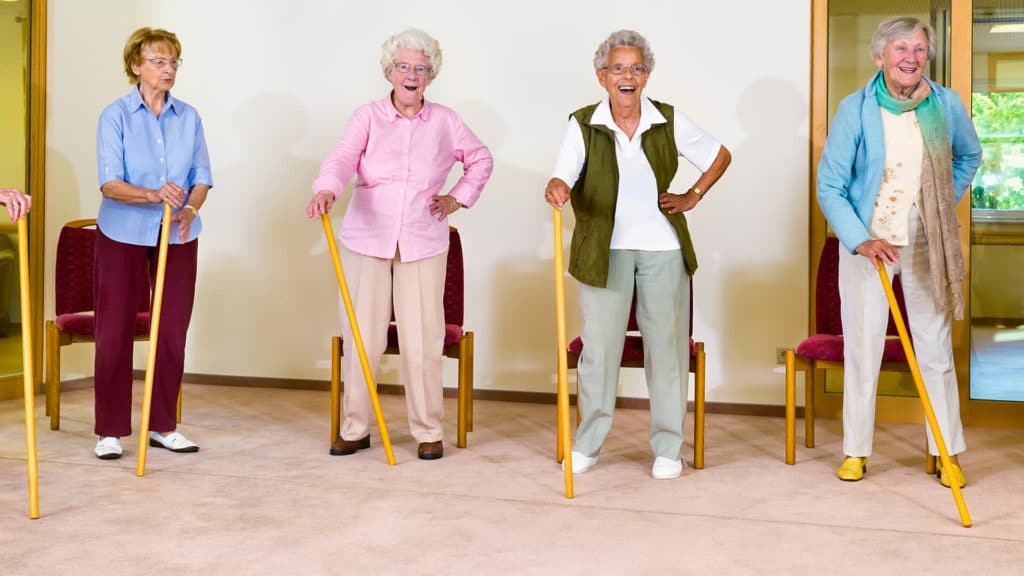There are many factors to consider when sorting through care and housing options for older adults. Lifestyle preferences, socialization, transportation, physical limitations, daily routines—to name a few—can all impact the best choice for your loved one. And though cost is always part of the decision, comparing the various ancillary costs of “aging in place” (or remaining at home) with the inclusive pricing of community living is a complicated process. So, let’s break it down…
The Changing Face of Senior Living
Senior living communities are no longer where older adults go when they’re unable to care for themselves. They’re active communities that mark the next chapter of life—a chapter that can be full of adventure, quiet reflection, constant socialization, and much more.
If your views about senior living are based on stereotypes, fear, or an experience from decades ago, it’s time to shift your expectations. Try visiting some modern senior living communities to get a feel for what they actually offer. You may be surprised to see older adults leading more engaged lives in community settings than they ever did at home.
Staying at Home: A Costly Option
Ultimately, decisions about senior living may come down to a question of price. You can’t stay somewhere you can’t afford. And even if you can technically afford something, if it limits other opportunities, such as the ability to take part in activities that interest you or eat the food you love, it might not be worth the expense.
However, many families wrongly assume that if the mortgage is paid off, remaining at home is free! Unfortunately, there are still taxes, insurance, utilities, food, transportation, inside and outside maintenance, repairs, home modifications, emergency response technology—the list goes on and on!
Aging in place can cost almost twice as much as living in a senior living community, particularly if you need medical or living assistance. What misleads many seniors is they compare the cost of their mortgage with that of a senior living community. A mortgage will almost always be less. This figure fails to take into account costs such as home maintenance and living expenses, as well as in-home care when and if you need it.
The little things can really start to add up at home. The expenses start with groceries and continue to anything from basic maintenance to trash collection—not to mention major costs such as home renovation to accommodate wheelchairs or other older adult needs. An older adult who has modest in-home care needs of about four hours per day can expect to spend $4,800 per month if he or she owns a $150,000 home. Someone living in a $500,000 condo can expect to spend more like $8,900 per month. Keep in mind that these figures don’t take into account the costs of more intensive needs, such as in-home memory care. An older adult who needs memory assistance or whose illness demands 24-hour care could easily see an aging-in-place bill well over $10,000 per month.
Older adults willing to consider senior communities pay less at every level of need. In fact, memory care costs hover around $6,700 per month. Older adults who need assisted living can expect to pay about $5,400 per month, and seniors living in independent settings would pay about $3,700 per month.

Staying at Home Can Mean Less Independence
Though cost can constrain your options, it should never be the only consideration. Many older adults are willing to pay a premium for greater independence and a more fulfilling life. The problem is that aging in place might not offer what you hope.
When you live at home, you’ll have to leave the house to see friends, take classes, and participate in your community. Aging can make driving more difficult and may eventually remove the ability to drive altogether. Older adults who can’t drive may feel like prisoners in their homes. They’re shut away from their communities and dependent on public transportation, senior services, or family members to take them where they want to go.
Older adults who intend to live at home may find those homes unsuited to handle the challenges of aging. Stairs, concrete floors, jagged sidewalks, and gardens that need tending all pose dangers to seniors. More than 1 in 3 seniors experience falls each year. The wrong home setup increases the risk.
Lost independence, increased risk, and the challenges of finding things to do outside your home are all intangible costs of aging in place. You might not be able to put a specific value on these factors, but you should consider how much your quality of life is worth. An affordable senior living community can offer a more vibrant life with more options.
Hidden Costs to Watch For
When comparing senior living communities with aging in place, looking for hidden costs is important. If you’re contemplating remaining at home, consider the following questions:
- Is it likely my home will need any major repairs in the next 10-20 years?
- How easily can I access activities and socialization if I’m no longer able to drive?
- How much does entertainment cost me, and how much do I need to spend to remain happy and engaged?
- Are there any additional costs, such as home modifications, that I wouldn’t have to pay if I opted for a senior community?
- How safe is my home? What is the potential financial and medical toll that an injury could take?
- What other expenses do I need to pay on a recurring basis?
- Will I need to increase my budget to accommodate in-home care? How much will that cost?
- What level of in-home care, if any, will my insurance policies cover?
If you decide to try a senior living community, be sure to ask:
- What amenities are included in the base price?
- Are activities and transportation included, or do they cost extra? How much?
- What sort of care and assistance is included? How much does additional support cost?
- Are there additional fees, such as community dues or a deposit, I’ll have to pay?
- How much are various meal plans? How much will I likely spend on groceries to supplement these meal plans?
There’s no one right choice. A realistic perspective on costs, your specific needs, and your future health can help you arrive at the right decision. Don’t be afraid to compare multiple communities and ask plenty of questions. You deserve a future you can be excited about. Keep looking until you’ve found it!



